Teodorescu P.P. Mechanical Systems, Classical Models Volume I: Particle Mechanics
Подождите немного. Документ загружается.


MECHANICAL SYSTEMS, CLASSICAL MODELS
714
they result from the relation (A.2.5) and from the condition that the mixed derivatives
of second order of the quasi-potential
123
(, , ;)UUxxxt
=
be immaterial on the order
of differentiation (we assume that
2
()UCD∈ ,
3
123
(, , )xxx D∈⊂\ , with respect
to the space variables).
To a determined potential
123
(, , )UUxxx
=
one may add an arbitrary constant,
without any change of its properties. We mention also the properties:
iv)
12 1 2 2 1
grad( ) grad gradUU U U U U=+;
v)
grad() ()grad
f
UfU U
′
= ,
1
f
C∈ ;
vi)
12
12 1 2
grad ( , ) grad grad
UU
f
UU f U f U
′
′
=+
;
vii)
( )grad grad ( )d
f
UU fUU=
∫
,
f
integrable.
These properties hold for a quasi-potential field too. Concerning the position vector
r ,
we may write
1
grad
r
r
= r ,
()
grad ( )
f
r
fr
r
′
= r
,
1
f
C∈ , (A.2.16)
grad( )
⋅
=Cr C, const=
J
JJJJG
C . (A.2.16')
In the case of a potential
123
(, , ) ()UUxxx U
=
= r , the formula (A.2.9) allows to
write the differential
dgraddUU
=
⋅ r
. (A.2.17)
Introducing the mapping
()ss→ r , which defines a curve C , it results that
()UUs= , so that
dd
grad grad
dd
UU
UU
ss s
∂
== ⋅= ⋅
∂
r
τ
, (A.2.18)
obtaining thus the derivative on the direction of the unit vector
τ
of the tangent to this
curve; the partial derivative is, in this case, equal to the total derivative. By means of
the above introduced operator
∇
, one may conceive the symbol d of the total
differential as an operator, in the form of a scalar product
dd dgrad
=
⋅= ⋅
∇
rr. (A.2.19)
The formula (A.2.6') leads to the operator derivative in the direction of the unit vector
n , which may be expressed in the form
grad
n
∂
=⋅ =⋅
∂
∇nn; (A.2.20)
if ()s=rr and
=n τ
, then we get the operator

Appendix
715
d
( ) grad
d
s
ss
∂
′
== ⋅=⋅
∂
∇τ
r . (A.2.20')
Thus, one introduces the linear scalar differential operator
grad
iii
i
AA
x
∂
⋅=⋅= =∂
∂
∇AA , (A.2.21)
where
A is a constant or variable given vector. Applying this operator to the scalar
field
U , one obtains the scalar
,
(grad) ( )
ii i i
UAUAU
⋅
=∂ =A (A.2.21')
as well, but applying the operator to the vector field
V , it results the vector
,
(grad) ( )( )
jj j
kk kjk
AV AV⋅=∂ =AV i i. (A.2.21'')
In particular, we get the total differential of a vector field
123
(, , )xxx
=
VV in the
form
d(dgrad)
=
⋅Vr V, (A.2.22)
and the derivative in the direction of the unit vector
n is given by
(grad)
n
∂
=⋅
∂
V
nV
; (A.2.23)
for ()s=rr and =n τ one obtains
d
(grad)
d
ss
∂
==⋅
∂
VV
V
τ . (A.2.23')
In the system of curvilinear co-ordinates
123
(,, )qqq , introduced in Subsec. 1.1.5,
the moduli of the gradients of the surfaces of co-ordinates
const
i
q
=
, 1, 2, 3i = , are
given by the differential parameters of the first order
grad
ii
ii
qgh
=
= (!),
1, 2, 3i
=
. (A.2.24)
In orthogonal curvilinear co-ordinates, the gradient operator has the form
12 3
112 23 3
11 1
grad
HqHqH q
∂
∂∂
=++
∂
∂∂
ii i. (A.2.25)
In spherical co-ordinates, we obtain

MECHANICAL SYSTEMS, CLASSICAL MODELS
716
11
grad
sin
rr
r
sss rr r
ϕϕ
θθ
ϕ
θ
θθϕ
∂∂ ∂∂ ∂ ∂
=++ =+ +
∂∂∂ ∂ ∂ ∂
iii i i i, (A.2.25')
while in cylindrical co-ordinates we may write
1
grad
rzrz
rz
sssrr z
θθ
θ
θ
∂∂∂∂ ∂∂
=++=+ +
∂∂∂∂ ∂∂
iii i ii. (A.2.25'')
2.2 Differential operators of first and second order
One may set up vector differential operators of first order and scalar differential
operators of second order by means of the vector differential operator
∇ ; such
operators may appear in problems of mechanics.
2.2.1 Vector differential operators of first order
Besides the scalar differential operator
⋅
∇
A , we introduce also the vector
differential operator
jj
jkl l k jkl l
k
AA
x
∂
×=∈ ∂=∈
∂
∇Aii, (A.2.26)
where
A
is a constant or variable given vector; applying this operator to the scalar
field
U
, one obtains the vector
,
()
j
j
kl k l
UAU
×
=∈Ai
∇
. (A.2.26')
The differential operator “
⋅
∇
” applied to a vector V defines the divergence of the
vector; we have thus
,
div
i
ii ii
i
V
VV
x
∂
=⋅= =∂ =
∂
∇VV . (A.2.27)
This is a scalar quantity, hence invariant to a change of co-ordinate axes. We mention
the properties:
i)
12 1 2
div( ) div div+= +VV V V;
ii)
div( ) div gradλλ λ=+⋅VVV, ()λλ
=
r scalar.
In orthogonal curvilinear co-ordinates, we obtain
231 312 123
123 1 2 3
1
div ( ) ( ) ( )
HHV HHV HHV
HHH q q q
∂∂∂
⎡⎤
=++
⎢⎥
∂∂∂
⎣⎦
V ; (A.2.28)
in particular, in spherical co-ordinates, we have
()
2
2
11 1
div (sin )
sin sin
r
V
rV V
rr r
r
ϕ
θ
θ
θθ θ ϕ
∂
∂∂
=+ +
∂∂ ∂
V , (A.2.28')
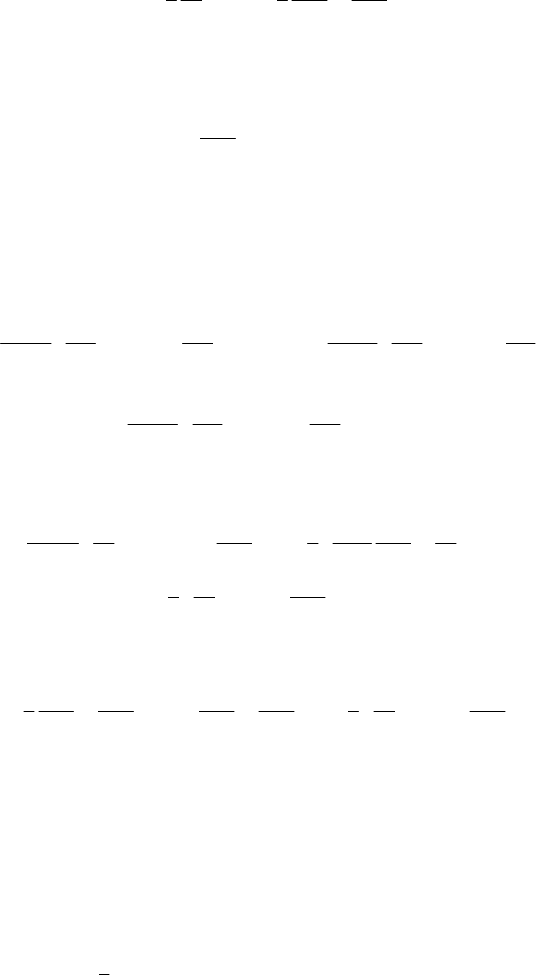
Appendix
717
while in cylindrical co-ordinates we may write
11
div ( )
z
r
V
V
rV
rr r z
θ
θ
∂
∂
∂
=++
∂
∂∂
V . (A.2.28'')
The differential operator “
×
∇
” applied to a vector V leads to the curl of this
vector; we may write
,
curl
k
j
j
kl l jkl k l jkl k j l
j
V
VV
x
∂
= × =∈ =∈ ∂ =∈
∂
∇VV i i i
, (A.2.29)
this definition being immaterial of the co-ordinate axes too. We mention the properties:
i)
12 1 2
curl( ) curl curl+= +VV V V;
ii)
curl( ) curl gradλλ λ=+×VVV, ()λλ
=
r scalar.
In orthogonal curvilinear co-ordinates we have
33 22 1 11 33 2
23 2 3 31 3 1
11
curl () () () ()
HV HV HV HV
HH q q HH q q
∂∂ ∂∂
⎡⎤⎡⎤
=−+−
⎢⎥⎢⎥
∂∂ ∂∂
⎣⎦⎣⎦
Vii
22 11 3
12 1 2
1
() ()
HV HV
HH q q
∂∂
⎡
⎤
+−
⎢
⎥
∂∂
⎣
⎦
i ; (A.2.30)
in particular, in spherical co-ordinates we may write
111
curl (sin ) ( )
sin sin
r
r
V
V
VrV
rrr
θ
ϕϕ
θ
θ
θθ ϕ θϕ
∂
∂∂∂
⎡⎤⎡ ⎤
=−+−
⎢⎥⎢ ⎥
∂∂ ∂∂
⎣⎦⎣ ⎦
Vii
1
()
r
V
rV
rr
ϕ
θ
θ
∂
∂
⎡
⎤
+−
⎢
⎥
∂∂
⎣
⎦
i , (A.2.30')
while in cylindrical co-ordinates we get
(
)
11
curl ( )
zrz r
rz
V
VVV V
rV
rz zrrr
θ
θθ
θθ
∂
∂∂∂∂∂
⎛⎞
⎡
⎤
=− +−+ −
⎜⎟
⎢
⎥
∂∂ ∂∂ ∂ ∂
⎣
⎦
⎝⎠
Vii i. (A.2.30'')
Concerning the operators grad, div and curl we mention the formulae
12 2 1 1 2 1 2 2 1
grad( ) ( ) ( ) curl curl
⋅
=⋅ +⋅ +× +×∇∇VV V V V V V V V V, (A.2.31)
12 2 11 2
div( ) curl curl×=⋅ −⋅VV V VV V, (A.2.31')
12 2 1 1 2 1 2 2 1
curl( ) ( ) ( ) div div×=⋅ −⋅ + −
∇
∇VV V V V V V V V V. (A.2.31'')
In particular, the formula (A.2.31) leads to
2
1
grad ( ) curl
2
=⋅ +×∇VVVV V. (A.2.32)
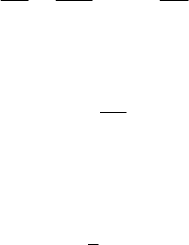
MECHANICAL SYSTEMS, CLASSICAL MODELS
718
These results have been obtained by the methods of vector algebra, effecting formal
calculations by means of the vector operator
∇
.
A vector field for which
curl
=
×=
∇
VV0 (A.2.33)
is called irrotational. We notice that a field of gradients
gradUU
=
=
∇
V
(A.2.33')
is irrotational ( curl gradU
=
0 ); hence, the fields of quasi-conservative vectors (in
particular, conservative) are irrotational, being the only ones which have the mentioned
property. A vector field for which
div 0
=
⋅=
∇
VV (A.2.34)
is called solenoidal. It is easy to see that a field of curls
curl
=
=×
∇
VWW (A.2.34')
is solenoidal (
div curl 0=W ); one may show that this is the only vector field which
has the property (A.2.34).
2.2.2 Absolute and relative derivatives
Let
V be a vector expressed in the form
j
j
V
′
′
i with respect to a fixed orthonormed
frame of reference
123
Ox x x
′′′ ′
and in the canonical form
j
j
V i with respect to a movable
orthonormed frame
123
Ox x x . The mobility of the latter frame is characterized by the
mappings
()
j
tt→ i ,
[
]
0
1
,ttt∈ , 1, 2, 3i
=
; as well the vector V defines a vector
field by the mapping
()tt→ V . The independent variable t may be – eventually – the
time. Differentiating with respect to
t , one obtains
dd
d
dd d
jj
j
jjjjj
V
VVV
tt t
=+=+
i
V
iii
.
We denote
j
j
V
t
∂
=
∂
V
i
, (A.2.35)
that is the relative derivative of the vector
V with respect to the movable frame. Let be
the vector
()
1
2
j
j
kl k l
=∈ ⋅
ω iii; (A.2.36)

Appendix
719
we notice that
() ()
1
2
mn m n
j
jj jj
lmn l ljk lmn k k k
VVVVω×=∈ =∈∈ ⋅ = ⋅ =
ω Vi iiiiiii,
where we took into account a formula of the form (2.1.46') and the relation
0
jj
kk
⋅+⋅=
ii ii (consequence of the relation (2.1.14)). Finally, we obtain the
relation
d
d
tt
∂
=
+×
∂
ω
VV
V
, (A.2.37)
where d/dtV is the absolute derivative of the vector V with respect to the fixed
frame of reference. In particular, we obtain Poisson’s formulae (the unit vectors
k
i are
fixed with respect to the movable frame, so that
/
k
t
∂
∂=i0)
kk
=
×
ωii, 1, 2, 3k
=
. (A.2.38)
From the formula (A.2.37), which links the absolute derivative of a vector to its
relative one, one sees that these derivatives are – in general – not equal. The two
derivatives are equal only in the case in which
×
=
ω
V0, hence if the vectors V and
ω are collinear or if =ω 0 ; this happens if
j
=
i0, 1, 2, 3j
=
, hence if the movable
frame moves without any rotation (the unit vectors
j
i , 1, 2, 3j
=
, are of constant
direction). We state also that
d/d /tt
=
∂∂=
ω
ωω.
2.2.3 Scalar differential operators of second order
We introduce the scalar differential operator of second order
222
2
222
123
div grad
ii
ii
xx
xxx
Δ
∂
∂∂∂∂
== =∂∂= = + +
∂∂
∂
∂∂
∇
(A.2.39)
called the operator of Laplace (Laplacian). If it is applied to a scalar
123
(, , )UUxxx= , then one obtains
2
,
ii ii
UU UUΔ ==∂∂=∇
, (A.2.39')
while it is applied to a vector, then we get
,
j
jj
j
kk
VVΔΔ
=
=Vi i. (A.2.39'')
A scalar function
2
()UCD∈
, which verifies the equation
0UΔ
=
(A.2.40)
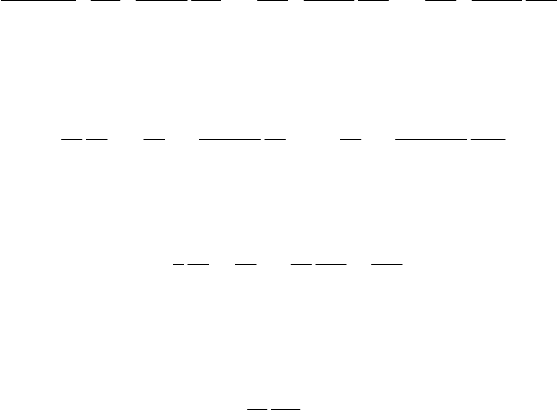
MECHANICAL SYSTEMS, CLASSICAL MODELS
720
in the domain
D , is called harmonic function in this domain; analogously, a scalar
function
4
()UCD∈ , which verifies the equation
24
0UUΔ
=
=∇ (A.2.41)
in the domain
D , is called biharmonic function in this domain. One may introduce – on
this way – polyharmonic functions too. In orthogonal curvilinear co-ordinates it
results
23 31 12
1231 11 2 22 3 33
1
HH HH HH
HHHqHq qHq qHq
Δ
∂∂∂∂∂∂
⎡⎛ ⎞ ⎛ ⎞ ⎛ ⎞⎤
=++
⎜⎟⎜⎟⎜⎟
⎢⎥
∂∂∂∂∂∂
⎣⎝ ⎠ ⎝ ⎠ ⎝ ⎠⎦
;
(A.2.42)
in particular, in spherical co-ordinates, we get
(
)
(
)
2
2
22 222
11 1
sin
sin sin
r
rr
rr r
Δθ
θθ
θθϕ
∂∂ ∂ ∂ ∂
=+ +
∂∂ ∂ ∂
∂
, (A.2.42')
while, in cylindrical co-ordinates, one has
(
)
22
22 2
11
r
rr r
rz
Δ
θ
∂
∂∂∂
=++
∂∂
∂
∂
. (A.2.42'')
The operator of Laplace is of elliptic type. Analogously, we introduce the operator of
d’Alembert of hyperbolic type (d’Alembertian) in the form
2
22
1
c
ct
Δ
∂
=−
∂
, , constc
=
; (A.2.43)
assuming that
123
(,, ;)UUxxxt= , the equation
0
c
U
=
, , (A.2.44)
where
2
()UCD∈ , is called the wave equation, while c is the propagation velocity of
these waves. Analogously, the equation
c
=
, V0, (A.2.44')
where
123
(, , ;)xxxt
=
VV , corresponds to three scalar equations of wave propagation.
If
4
()UCD∈ , then we may introduce the double wave equation
12
0U
=
,, (A.2.45)
too, where the operators
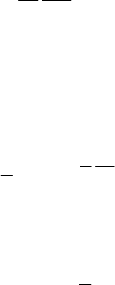
Appendix
721
2
22
1
i
i
ct
Δ
∂
=−
∂
, ,
const
i
c
=
, 1, 2i
=
, (A.2.45')
correspond to two simple wave equations. Analogously, one may introduce functions
which verify a poly-wave equation.
We introduce also Nicolescu’s caloric operator of parabolic type
1
at
Δ
∂
=−
∂
∩
,
consta
=
, (A.2.46)
where a is the thermic diffusivity; assuming that
123
(,, ;)UUxxxt
=
, the equation
0U
=
∩ , (A.2.47)
where
2
()UCD∈ , is called the caloric equation; analogously, one may introduce
polycaloric functions.
Between the differential operators grad, div, curl and
Δ takes place the relation
curl curl grad div Δ
=
−VVV. (A.2.48)
We notice the relations
,
()2
iii
xU U x UΔΔ
=
+ , 1, 2, 3i
=
, (A.2.49)
(
)
22
64gradrU U U r UΔΔ=+⋅ +r , (A.2.49')
which, if
U is a harmonic function, become
,
()2
ii
xU UΔ
=
, 1, 2, 3i
=
, (A.2.50)
(
)
2
64gradrU U UΔ =+⋅r
; (A.2.50')
we mention the formula
()2divΔΔ
⋅
=+⋅rV V r V, (A.2.51)
which, if the vector
V is harmonic, becomes
⋅
=rV V()2divΔ . (A.2.51')
Also, one verifies the relations
⋅= +⋅rV V r V
()2div
ii
,,, 1, 2i
=
, (A.2.52)
analogous to the formula (A.2.51), which – in the case when the vector
V satisfies a
simple wave equation – becomes
MECHANICAL SYSTEMS, CLASSICAL MODELS
722
()2div
i
⋅
=, rV V,
1, 2i
=
. (A.2.52')
If
curl
=
VW, (A.2.53)
then the formulae (A.2.51) and (A.2.52) take the form
( curl ) curl curlΔΔΔ⋅=⋅ =⋅rWr Wr W, (A.2.54)
( curl ) curl curl
iii
⋅=⋅ =⋅,,,rWr Wr W, 1, 2i
=
. (A.2.54')
2.2.4 Theorems of Almansi and Boggio type
Sometimes, the study of certain partial derivative equations may be reduced to the
study of several equations of the same type but of a smaller order. We can thus state
Theorem A.2.1 (of Almansi type). If D is a differential operator with constant
coefficients, of order
m , in s variables
12
, ,...,
s
qq q, and if we assume that
12
(, ,..., )
s
UUqq q= , then the solution of the equation
0
n
U
=
D , (A.2.55)
where
()
mn
UC D
∈
, may be written in the form
21
0
11 1 2 1 1
...
n
n
UU qU qU qU
−
−
=+ + ++ , (A.2.55')
where
0
11
, ,...,
n
UU U
−
are functions of the same variables, which verify the equations
0
i
U
=
D ,
0,1,2,..., 1in
=
−
; (A.2.55'')
obviously, the variable
1
q may be replaced by anyone of the other 1n − independent
variables and the functions
i
U can be of the class
p
C , pmn
<
.
In particular, let be the biharmonic equation (A.2.41) and two harmonic functions
1
U and
2
U in the domain D , which satisfy the equation (A.2.40). The biharmonic
function
U may be expressed univocally by means of Almansi’s formula
112
UU xU
=
+ ; (A.2.56)
hence, a biharmonic function is – in a certain manner – equivalent to two harmonic
functions. We notice that one may replace the variable
1
x by one of the variables
2
x or
3
x ; as well, we may write
2
12
UU rU=+
. (A.2.56')
Analogously, let
i
D ,
1,2,...,ip
=
, be differential operators of order
i
m in the
variables
12
, ,...,
s
qq q and let be a function
12
(, ,..., )
s
UUqq q
=
; we may state
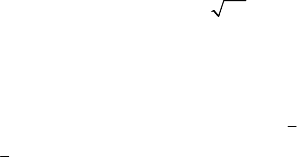
Appendix
723
Theorem A.2.2 (of Boggio type). If
i
D are permutable differential operators, prime
two by two,
ij ji
=
DD DD
, , 1,2,...,ij p
=
, (A.2.57)
then the solution of the equation
=
12
... 0
p
UDD D , (A.2.57')
where
12
...
()
p
mm m
UC D
+++
∈
, may be written in the form
12
...
p
UU U U
=
+++, (A.2.57'')
12
, ,...,
p
UU U being functions of the same variables and the same class, which satisfy
the equations
0
ii
U
=
D , 1,2,...,ip
=
. (A.2.57''')
The condition (A.2.57) is fulfilled, for instance, in the case of operators with
constant coefficients. In particular, observing that Laplace’s operator (A.2.39) can be
written in the form
1212
(i)(i)xxxxΔ =+ − ,
i1
=
−
, in the two-dimensional case,
a harmonic function can be written in the form
12
UU U=+,
=
+
1112
(i)UUx x,
=
−
2212
(i)UUx x, (A.2.40')
obtained by a change of variable of the form
=
+
12
izx x,
=
−
12
izx x, so that one
gets the equations
∂∂=
1
/0Uz and
2
/0Uz
∂
∂= , respectively.
In the case of the double wave equation (A.2.45) we obtain
12
UU U
=
+ , (A.2.58)
where
1
U
and
2
U
verify the equations
11
0U
=
, ,
22
0U
=
, , (A.2.58')
d’Alembert’s operators being given by (A.2.45').
2.3 Integral formulae
We have considered discrete systems of bound and sliding vectors in Chap. 2, Sec.
2.2; in what follows, we will deal with continuous systems of such vectors. Besides, a
continuous system of bound vectors is a field of vectors. We show thus the form taken
in this case by the results in Chap. 2, Subsec. 2.2; we introduce also some integral
formulae useful in practice.
